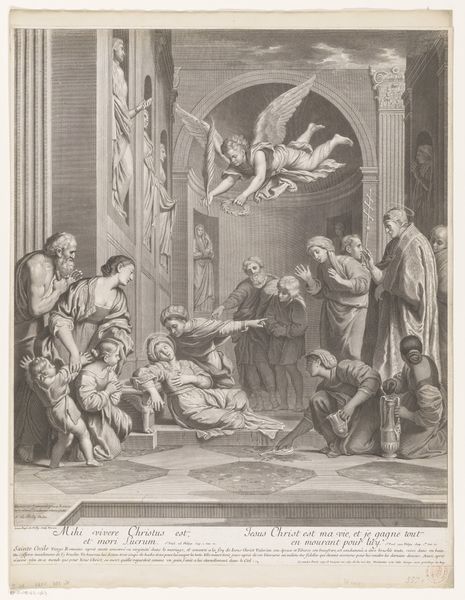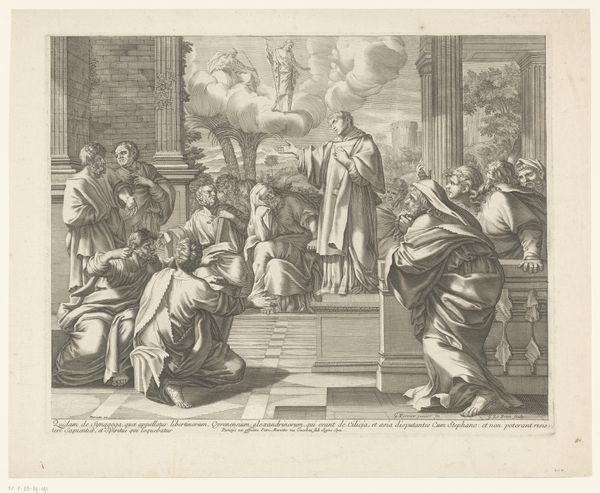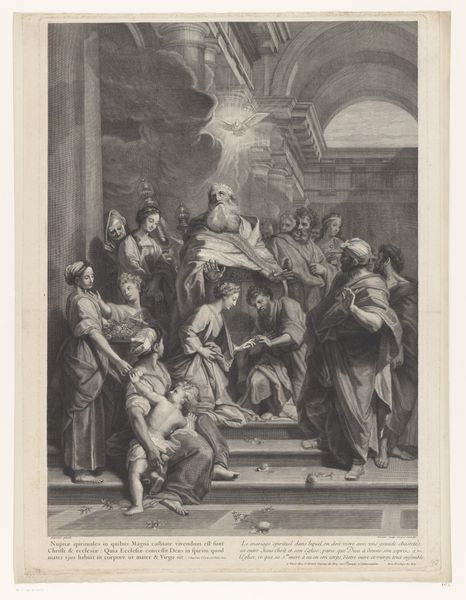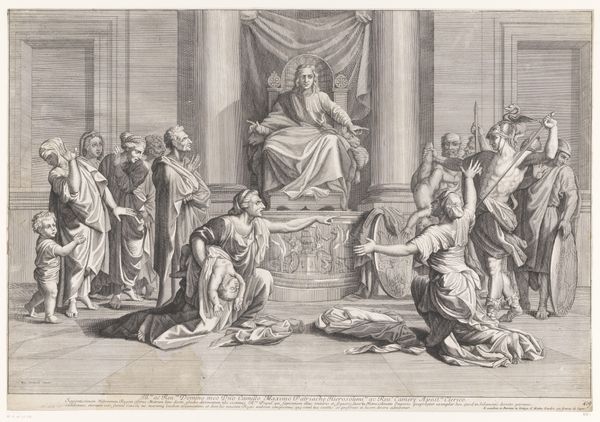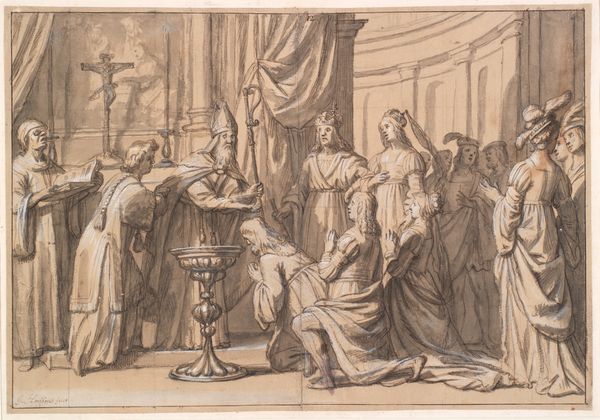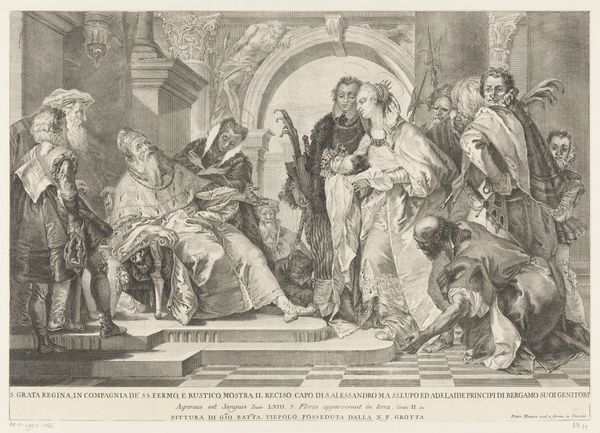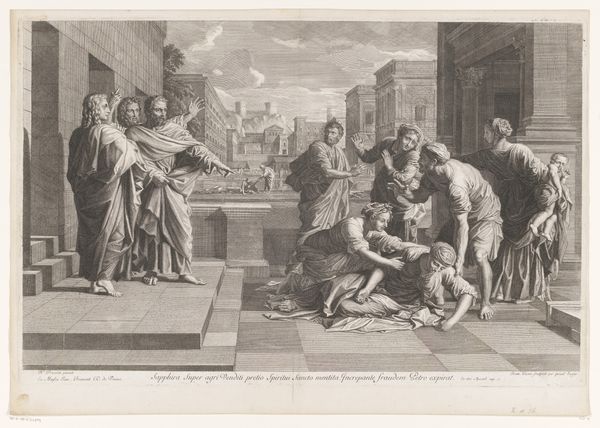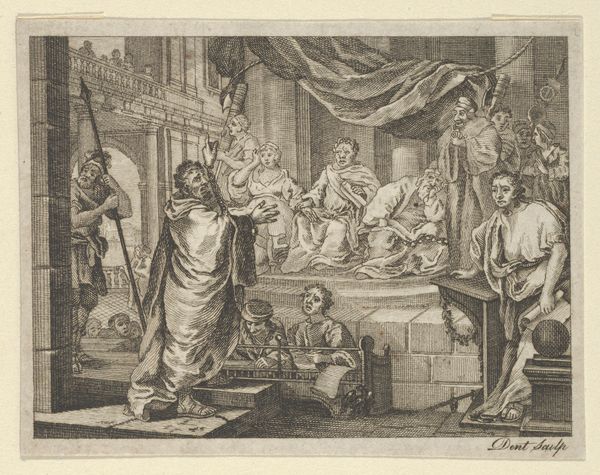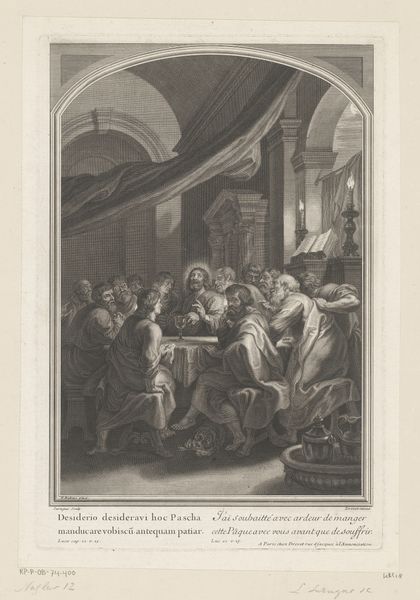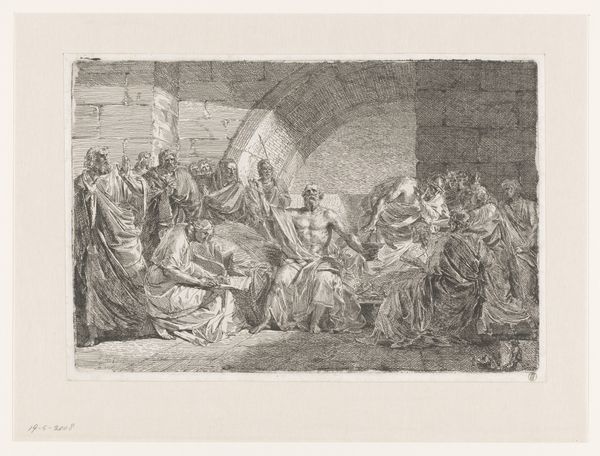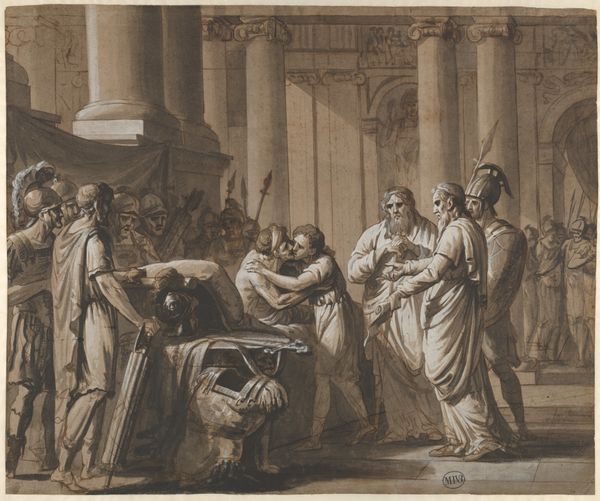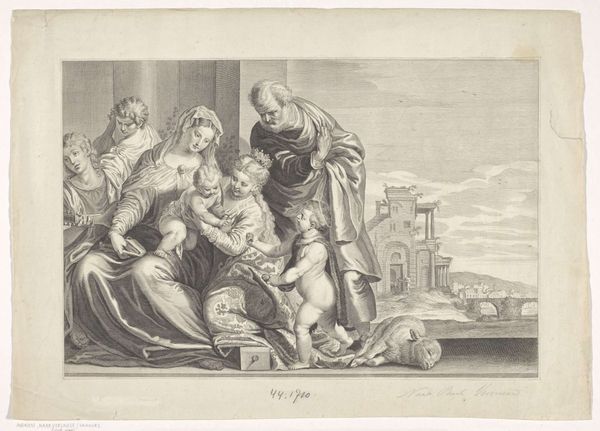
engraving
#
portrait
#
baroque
#
charcoal drawing
#
figuration
#
line
#
history-painting
#
engraving
Dimensions: height 518 mm, width 701 mm
Copyright: Rijks Museum: Open Domain
Curator: Here we have Jean Pesne’s "Esther voor Ahasveros," an engraving dating somewhere between 1643 and 1700. It's currently held in the Rijksmuseum collection. The dramatic scene unfolds with stark contrasts, doesn't it? Editor: Yes, that immediate tonal quality and the emphasis on line really struck me. I’m curious about the labor involved in such a detailed engraving, how many states it went through before the final print? You can see the artist truly grappling with how to use the material. Curator: Absolutely. Look how the engraving captures the power dynamic between Esther and Ahasuerus. Esther collapses before him, doesn’t she, her vulnerability on display in her fainting pose, while he sits enthroned, unmoved. It highlights the gendered expectations and risks she undertakes in approaching the king. Editor: The composition emphasizes the space and setting as well. The architectural details feel less like mere background and more like integral parts of the power structure that both frames and oppresses her. Those large imposing columns loom over everyone. I’m also thinking about the engraver's relationship to these systems, the patronage they worked under. Curator: Exactly. The figures attending to Esther also strike me—they represent female solidarity in the face of patriarchal dominance. They literally prop her up in a world that constantly tries to diminish her power. It really captures a specific moment in this famous biblical story when Esther, who risked everything to approach the king without being summoned, exposes the plot of Haman and ultimately saves the Jews of Persia from annihilation. Editor: And that story certainly resonated across different social strata. What kind of papers and inks were available during that period? That undoubtedly would have impacted how accessible the print was, and who got to see it, affecting its impact. Curator: Thinking about it through these intersectional lenses reveals layers of meaning in the work—about female agency, power, resistance. Editor: Right. These prints served as accessible narratives. Studying their production allows a view into their time and social class. Curator: Well, looking closely together like this, this is precisely why these prints remain so compelling after centuries! Editor: Indeed! Understanding both the artistic means and historical forces brings it alive in unique ways.
Comments
No comments
Be the first to comment and join the conversation on the ultimate creative platform.
